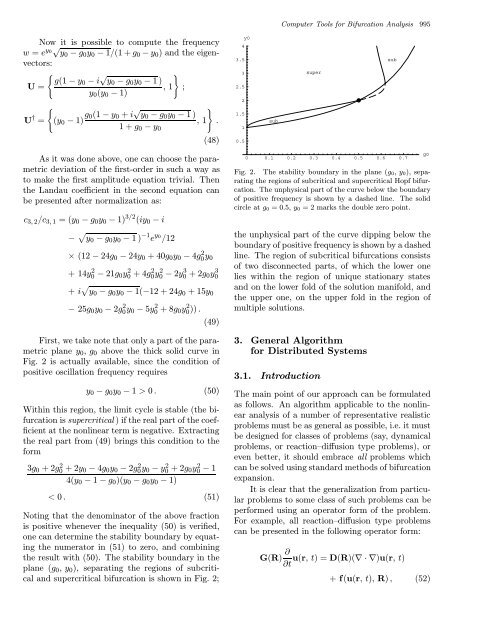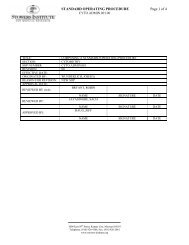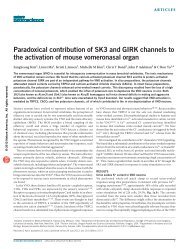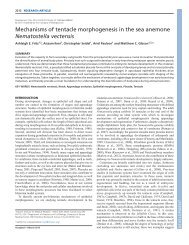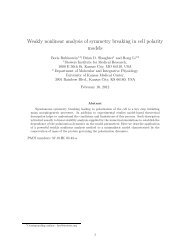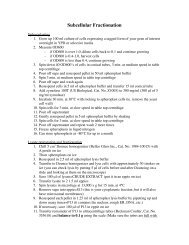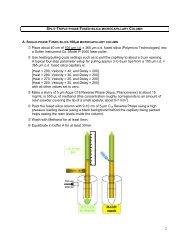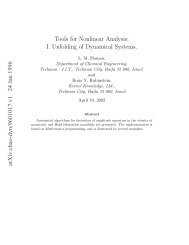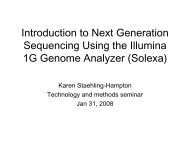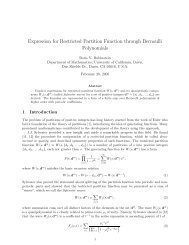Computer Tools for Bifurcation Analysis: General Approach with
Computer Tools for Bifurcation Analysis: General Approach with
Computer Tools for Bifurcation Analysis: General Approach with
You also want an ePaper? Increase the reach of your titles
YUMPU automatically turns print PDFs into web optimized ePapers that Google loves.
<strong>Computer</strong> <strong>Tools</strong> <strong>for</strong> <strong>Bifurcation</strong> <strong>Analysis</strong> 995<br />
Now it is possible to compute the frequency<br />
w = e y √ 0<br />
y 0 − g 0 y 0 − 1/(1 + g 0 − y 0 )andtheeigenvectors:<br />
{<br />
g(1 − y0 − i √ }<br />
y 0 − g 0 y 0 − 1)<br />
U =<br />
, 1 ;<br />
y 0 (y 0 −1)<br />
y0<br />
4<br />
3.5<br />
3<br />
super<br />
sub<br />
U † =<br />
{<br />
(y 0 − 1) g 0(1 − y 0 + i √ }<br />
y 0 − g 0 y 0 − 1)<br />
,1<br />
1+g 0 −y 0<br />
.<br />
(48)<br />
2.5<br />
2<br />
1.5<br />
1<br />
0.5<br />
sub<br />
As it was done above, one can choose the parametric<br />
deviation of the first-order in such a way as<br />
to make the first amplitude equation trivial. Then<br />
the Landau coefficient in the second equation can<br />
be presented after normalization as:<br />
c 3, 2 /c 3, 1 =(y 0 −g 0 y 0 −1) 3/2 (iy 0 − i<br />
− √ y 0 − g 0 y 0 − 1) −1 e y 0<br />
/12<br />
× (12 − 24g 0 − 24y 0 +40g 0 y 0 −4g 2 0 y 0<br />
+14y 2 0−21g 0 y 2 0 +4g 2 0y 2 0 −2y 3 0 +2g 0 y 3 0<br />
+i √ y 0 −g 0 y 0 −1(−12 + 24g 0 +15y 0<br />
−25g 0 y 0 − 2g 2 0 y 0 − 5y 2 0 +8g 0y 2 0 )) . (49)<br />
0 0.1 0.2 0.3 0.4 0.5 0.6 0.7<br />
Fig. 2. The stability boundary in the plane (g 0,y 0), separating<br />
the regions of subcritical and supercritical Hopf bifurcation.<br />
The unphysical part of the curve below the boundary<br />
of positive frequency is shown by a dashed line. The solid<br />
circle at g 0 =0.5,y 0= 2 marks the double zero point.<br />
the unphysical part of the curve dipping below the<br />
boundary of positive frequency is shown by a dashed<br />
line. The region of subcritical bifurcations consists<br />
of two disconnected parts, of which the lower one<br />
lies <strong>with</strong>in the region of unique stationary states<br />
and on the lower fold of the solution manifold, and<br />
the upper one, on the upper fold in the region of<br />
multiple solutions.<br />
g0<br />
First, we take note that only a part of the parametric<br />
plane y 0 ,g 0 above the thick solid curve in<br />
Fig. 2 is actually available, since the condition of<br />
positive oscillation frequency requires<br />
y 0 − g 0 y 0 − 1 > 0 . (50)<br />
Within this region, the limit cycle is stable (the bifurcation<br />
is supercritical ) if the real part of the coefficient<br />
at the nonlinear term is negative. Extracting<br />
the real part from (49) brings this condition to the<br />
<strong>for</strong>m<br />
3g 0 +2g 2 0 +2y 0−4g 0 y 0 −2g 2 0 y 0−y 2 0 +2g 0y 2 0 −1<br />
4(y 0 − 1 − g 0 )(y 0 − g 0 y 0 − 1)<br />
< 0 . (51)<br />
Noting that the denominator of the above fraction<br />
is positive whenever the inequality (50) is verified,<br />
one can determine the stability boundary by equating<br />
the numerator in (51) to zero, and combining<br />
the result <strong>with</strong> (50). The stability boundary in the<br />
plane (g 0 ,y 0 ), separating the regions of subcritical<br />
and supercritical bifurcation is shown in Fig. 2;<br />
3. <strong>General</strong> Algorithm<br />
<strong>for</strong> Distributed Systems<br />
3.1. Introduction<br />
The main point of our approach can be <strong>for</strong>mulated<br />
as follows. An algorithm applicable to the nonlinear<br />
analysis of a number of representative realistic<br />
problems must be as general as possible, i.e. it must<br />
be designed <strong>for</strong> classes of problems (say, dynamical<br />
problems, or reaction–diffusion type problems), or<br />
even better, it should embrace all problems which<br />
can be solved using standard methods of bifurcation<br />
expansion.<br />
It is clear that the generalization from particular<br />
problems to some class of such problems can be<br />
per<strong>for</strong>med using an operator <strong>for</strong>m of the problem.<br />
For example, all reaction–diffusion type problems<br />
can be presented in the following operator <strong>for</strong>m:<br />
G(R) ∂ u(r, t)=D(R)(∇·∇)u(r,t)<br />
∂t<br />
+f(u(r,t),R), (52)


